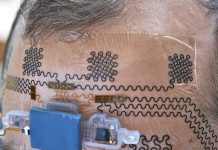
Texas! Famous for cowboys, barbecues, and… brain science?
You heard that right! The smarty pants at The University of Texas Health Science Center at San Antonio have come up with a super smart tool.
It’s a computer program that can spot little boo-boos in your brain when looking at pictures from an MRI scan. Why should you care?
Well, this nifty tool could help doctors catch brain diseases earlier than ever before. Cool, huh?
Meet Our Brain Hero, Dr. Habes
The leading brain behind this invention is a chap named Mohamad Habes. He works at a place called the Glenn Biggs Institute for Alzheimer’s and Neurodegenerative Diseases.
He’s a kind of super-nerd in the world of radiology and brain pictures. He’s also the boss of the Biggs Institute neuroimaging core.
But don’t worry if those big words just went over your head. What you need to know is: Dr. Habes is a top brain detective.
The Trouble with Brain Boo-boos
You see, there are these tiny little spots, called enlarged perivascular spaces (or ePVS’s for short), in our brains. They’re filled with a special fluid and are like tiny highways for our brain’s blood supply.
When these spaces get too big, they could be a sign of some nasty diseases that could cause stroke or dementia.
But there’s a problem: there are hundreds of these spaces in the brain and counting them all on a picture from an MRI scan is like trying to count all the stars in the night sky!
Our Super-Brain to the Rescue
That’s where our brainy hero, Dr. Habes, and his team stepped in. They developed a computer program – let’s call it the Brainy Bot – that can spot and count these ePVS’s in a jiffy.
This super smart tool not only finds these spaces but also tells us where exactly they are, how many there are, and how big they are! It’s like having a GPS for your brain.
Breaking New Ground in Brain Health
What makes this even cooler is that before the Brainy Bot, no one was able to do a full check-up of ePVS’s in the entire brain. But now, with this super-duper tool, we can do it!
Dr. Habes and his team discovered that these pesky spaces in two particular parts of the brain – the basal ganglia and the thalamus – are the most important ones to keep an eye on.
If these spaces get too big, it could be a sign of potential stroke or disease.
The Brainy Bot and its Big Future
The best part is that this Brainy Bot could be a game-changer for places like the Alzheimer’s Disease Research Centers (or ADRCs for short).
These are super-special places where the big brains of the country work together to try to beat dementia.
Our Brainy Bot could be the secret weapon they need to learn more about how brain diseases develop and how to stop them.
Brainy Bots and Super Computers
Now, you might be wondering, “How does this Brainy Bot work so quickly and accurately?” Well, it’s all thanks to a super-duper computer at the university, named Genie.
This isn’t your ordinary desktop computer. It’s a high-tech, super-fast computer that can process information faster than you can say ‘supercalifragilisticexpialidocious’!
Let’s Celebrate our Brainy Heroes
So, let’s hear it for our brainy heroes in Texas. They’ve taken a big problem – counting tiny spaces in the brain – and solved it using the power of computer science.
Now, with the Brainy Bot, doctors could catch diseases earlier, potentially saving lives. Now that’s worth a cowboy-sized “Yeehaw!”
Wrapping it Up
In a world that often feels filled with problems, it’s nice to know that there are super-smart people like Dr. Habes and his team working hard to solve them.
Here’s to the Brainy Bot and the brighter, healthier future it could help us all enjoy.
The study was published in JAMA Network Open.
Follow us on Twitter for more articles about this topic.
Copyright © 2023 Knowridge Science Report. All rights reserved.



